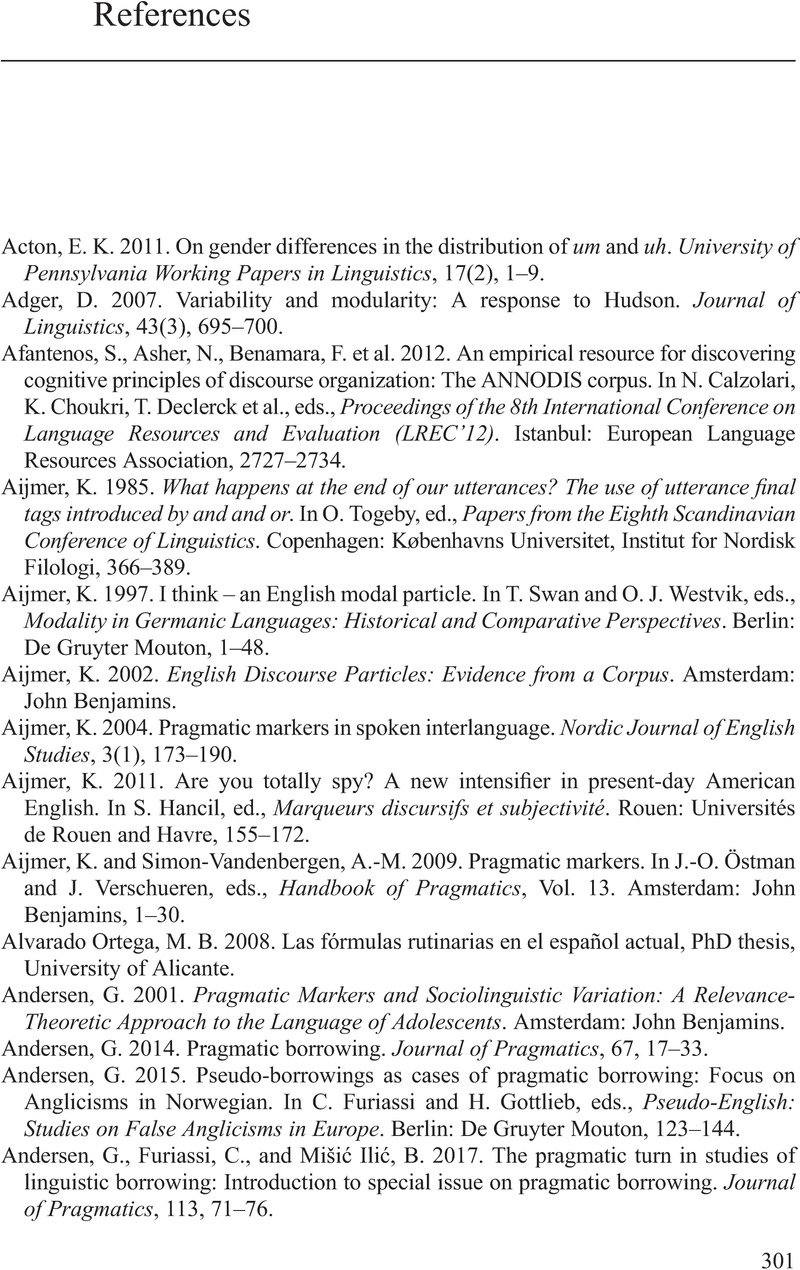Book contents
- Discourse-Pragmatic Variation and Change
- Discourse-Pragmatic Variation and Change
- Copyright page
- Contents
- Figures
- Tables
- Contributors
- Foreword
- Acknowledgments
- Abbreviations
- Introduction
- Part I Innovations in Theory and Method
- Part II Innovative Variables in English
- Part III Language Contact Settings
- Afterword
- References
- Index
- References
References
Published online by Cambridge University Press: 14 July 2022
- Discourse-Pragmatic Variation and Change
- Discourse-Pragmatic Variation and Change
- Copyright page
- Contents
- Figures
- Tables
- Contributors
- Foreword
- Acknowledgments
- Abbreviations
- Introduction
- Part I Innovations in Theory and Method
- Part II Innovative Variables in English
- Part III Language Contact Settings
- Afterword
- References
- Index
- References
Summary

Information
- Type
- Chapter
- Information
- Discourse-Pragmatic Variation and ChangeTheory, Innovations, Contact, pp. 301 - 328Publisher: Cambridge University PressPrint publication year: 2022
